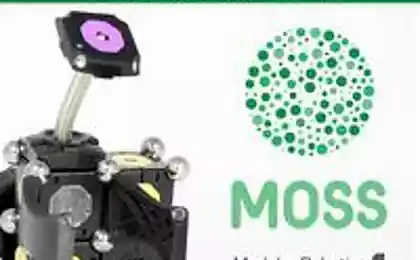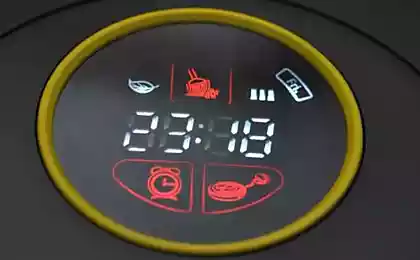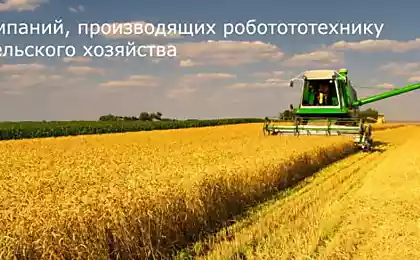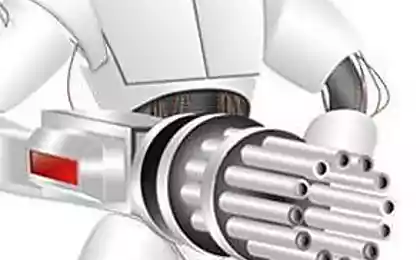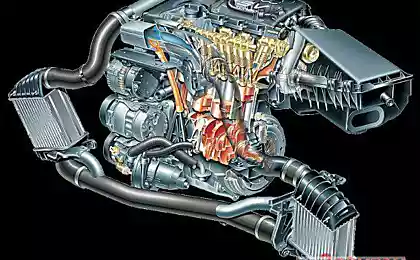852
25 campaigns that produce robotics for agriculture
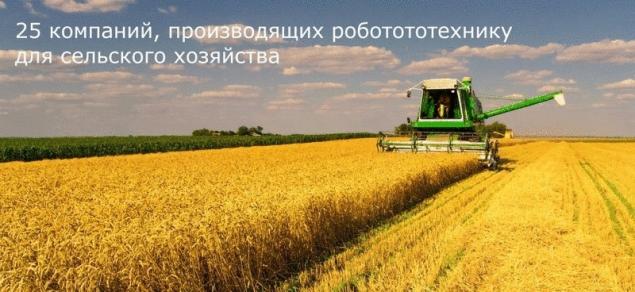
In this article we will tell you about 25 companies (from conglomerates to start-UPS) who seek to use robotics to solve problems of agriculture, but also about what these companies do, what their products will be available (or already available) and how much they will cost.
1. COMPANY: ISO GROUP, A FLIER SYSTEMS COMPANY, GAMEREN, THE NETHERLANDS. Web site: isogroepmachinebouw.nl
Product: RoBoPlant robot for planting flowers and semi-Autonomous robots for replanting of plants.
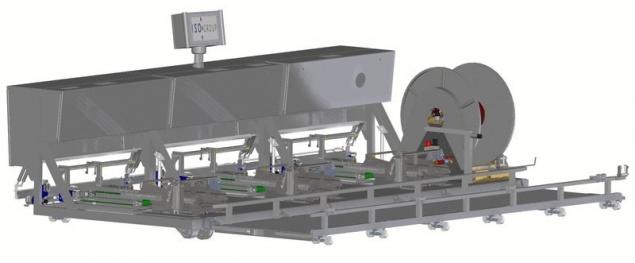
Robot planting flowers RoBoPlant developed by ISO Group.
Scope: whole territory of the EU.
Function: semi - automatic and fully automatic machinery for greenhouse or vegetable greenhouse. Robotic system for planting flowers takes peat plants, separates them and sits down on a pre-selected scheme.
Testing: continuous testing and development.
Availability: product sales began in 2002.
2. COMPANY: AUTONOMOUS TRACTOR, FARGO, NORTH DAKOTA.
Web site: autonomoustractor.com
Product: modular robotic tractor without cab control.

Area of application: manufacturers of hay in the United States.
Function: haymaking. There is a possibility of increasing the power of the engine depending on the type and size of the device. The functionality will be expanded to other crops and to other sectors not related to agriculture.
Testing: constant field testing.
Availability: in 2016 it is expected to enter the market and delivery of pre-orders.
Price: should be two times less than the cost of tractors and agricultural machines by using the same power sources.
3. COMPANY BLUE RIVER TECHNOLOGIES, SUNNYVALE, CA.
Web site: bluerivert.com
Product: LettuceBot2 (2nd generation) for thinning lettuce.

Applications: the lettuce fields of California and Arizona (account for 80% of production of lettuce in the US).
Function: thinning and weed spraying, iceberg, Roman and lettuce.
Testing: recently completed field testing machine 3rd generation; selective weeding used to improve germination of crops.
Availability: began to be used for the treatment of space in 2013.
Price: the cost of processing per unit area depends on the configuration of salad crops, but the cost is lower than you want to pay for manual labor.
4. COMPANY: AGROBOT, HUELVA, SPAIN.
Web site: agrobot.com
Product: Agrobot SW6010 and AGSHydro, hydroponic system of growing and harvesting the strawberries.
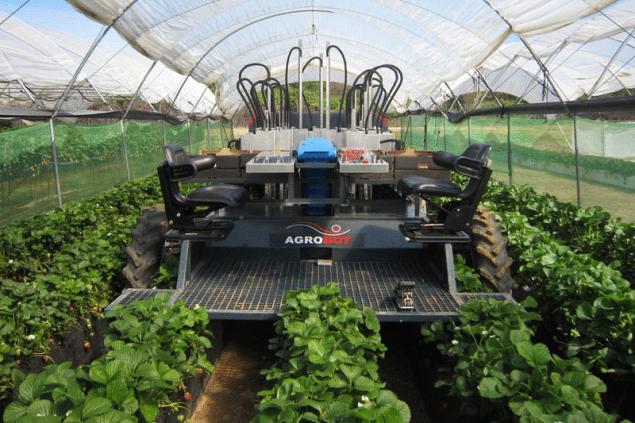
Agrobot for harvest
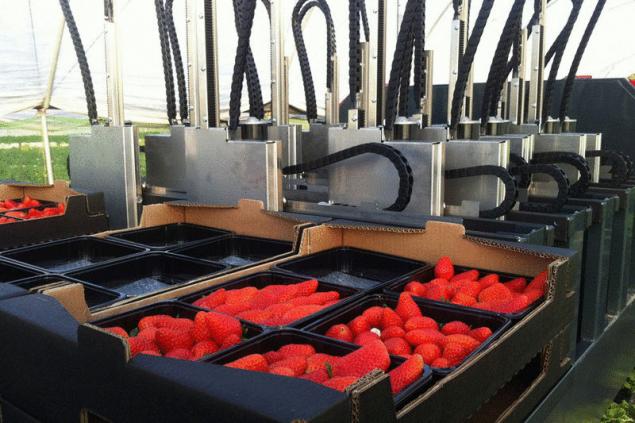
Applications: picking strawberries in Oxnard, California.
Function: gather ripe berries from hydroponic systems.
Testing: final testing of the strawberry picking will be held in January, after seasonal testing for several years.
Availability: mid-2015.
Price: $250000 for a harvester with 60 robotic arms. According to the farmer, who grows berries, Agrobot is a good investment in a few cases. For example, when it is possible to harvest cheaper than it did before, and when picking fruit there is not enough labor. In the latter case Agrobot pays off instantly, because if we can't harvest, then the business is worth.
5. COMPANY: AGRIBOTIX, BOULDER, COLORADO.
Web site: agribotix.com
Product: drones for precision agriculture — Agribotix Hornet Drone.
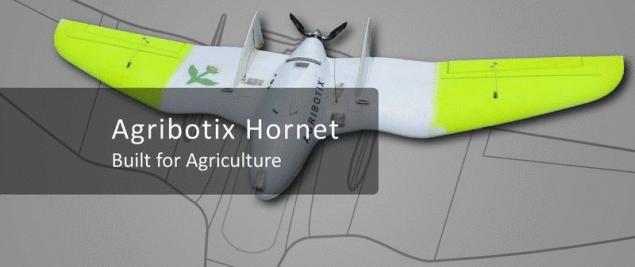
Agribotix Hornet Drone
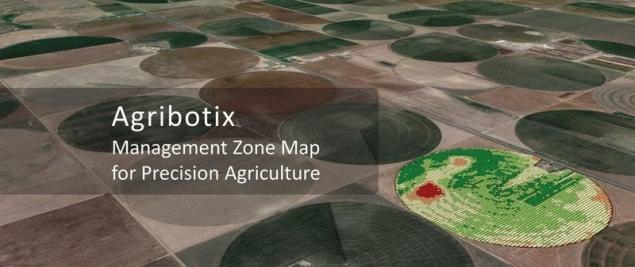

Applications: mid-West USA (Colorado, Kansas, Montana, etc.).
Function: agricultural drones are leased to cooperatives, agronomists, crop consultants, farm managers and large industrial agricultural corporations; they make pictures and cards with high resolution using a variety of sensors and process them and develop maps to identify what places require more use of fertilizers.
Testing: currently undergoing testing.
Availability: in stock sale started in 2014.
Price: about $8000 for the season, including training, use of drones, RGB and infrared images, improvement of plants and creation of maps. Agribotix offers image processing with pay-per area unit for the development of maps as part of the annual contract.
6. COMPANY: WALL-YE, MACON, FRANCE.
Web site: wall-ye.com
Product: Wall-Ye 1000 mobile pruning robot.

Scope: pruning of French vineyards.
Function: Autonomous pruning.
Testing: completed in 2013.
Availability: for sale and service.
Price: $30 000.
7. COMPANY: ECOROBOTIX, SR-PITTET, SWITZERLAND.
Web site: ecorobotix.com
Product: lightweight Autonomous robots for weeding; field robot ecoRobotix.
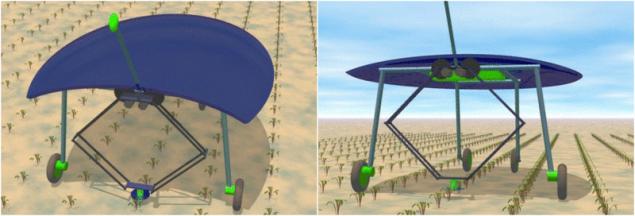
Scope: field testing in Switzerland; next year in Germany.
Function: a robotic platform for weeding of raised beds, which works based on advanced recognition algorithms weeds, has a fast robotic arms, advanced sensor technology, wireless communication and demonstrates high energy efficiency.
Testing: currently tested on the weeding of sugar beets, but it is planned to extend the scope of the also canola, sunflower, corn and soya.
Availability: first machines will be on sale by the end of 2015.
Price: 15 000 EUR.
8. COMPANY: ENERGID, CAMBRIDGE, MASSACHUSETTS.
Web site: energid.com
Product: a robot for harvesting citrus — dosing unit with a tow
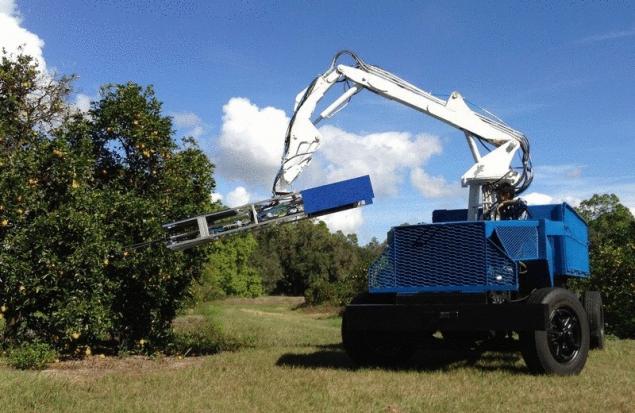
Scope of application: the citrus orchards of Florida; oranges (early and late season) and grapefruit.
Function: harvesting, primarily for juice.
Testing: testing will take place during the seasons of harvest in 2015-2016.
Availability: will appear in 2016.
Price: $300000–$400000.
9. COMPANY: HARVEST AUTOMATION, NORTH BILLERICA, MASSACHUSETTS.
Web site: harvestai.com
Product: mobile robot HV-100.
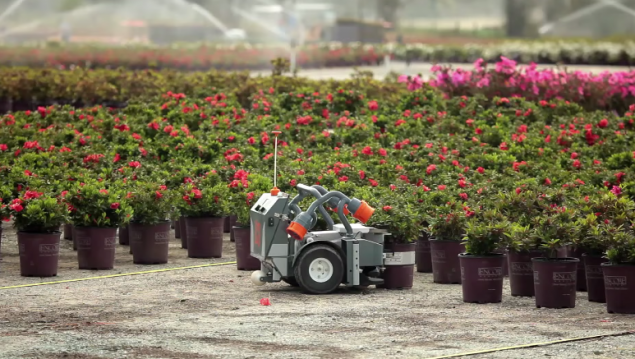
Application field: forest nurseries (berries, tomatoes, etc.).
Function: loading-unloading, moving containers, thinning.
Testing: testing of HV-100 is completed.
Availability: sold 2013.
Price: $130000 for a team of four robots. Company Harvest Automation also rents of a team of four robots for $30000 for 3 months. The rental scheme has been very successful. All who took the harvesters in the lease, subsequently purchased it.
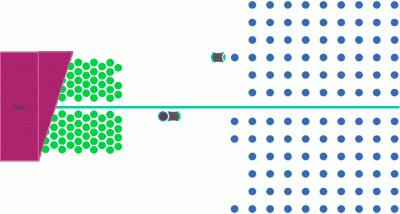
Diagram of the automated plant robot Harvest Automation
10. COMPANY: CLEARPATH ROBOTICS, KITCHENER, ON, CANADA. Web site: clearpathrobotics.com
Product: Grizzly RUV (robotic the car without a cabin) and Husky UGV.
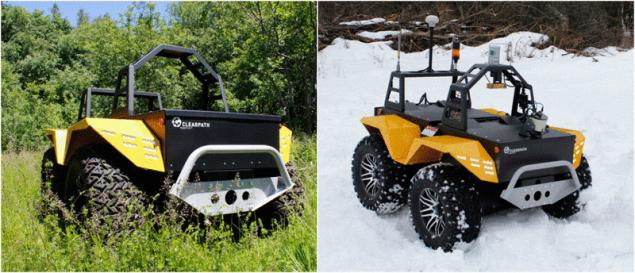
Scope: implemented research institutions with the aim of developing applications for agriculture.
Function: harvesting, mowing, removal, research.
Testing: testing the asparagus using a laser scanner to identify stems and crop them inside the soil; removal of manure from chicken farms while cleaning barns; determining spots on the field where the cows make urination for the purpose of processing of the soil, so the grass continued to grow; mowing between rows of fruit trees in the gardens; transportation of wagons with hay/straw in the barn and back; the transport of chemical fillers to the spraying; removal of manure.
Availability: currently sold only academic and research organizations.
Price: from $12000 to $100000 depending on the configuration.
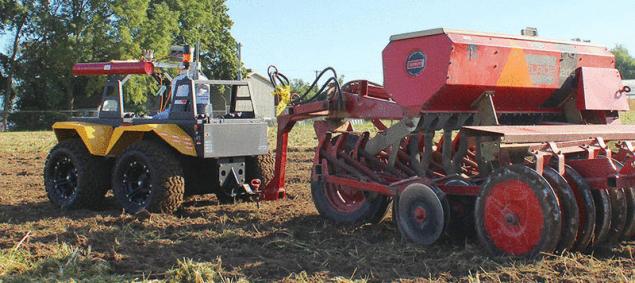
Clearpath Grizzly RUV, pulling equipment
11. COMPANY: AUTONOMOUS SOLUTIONS (ASI), PETERSBORO, UTAH.
Web site: www.asirobots.com
Product: Forge Robotic Platform, robotic platform to support the work of skid steer loader in standalone mode or with a remote control.
1 of 11
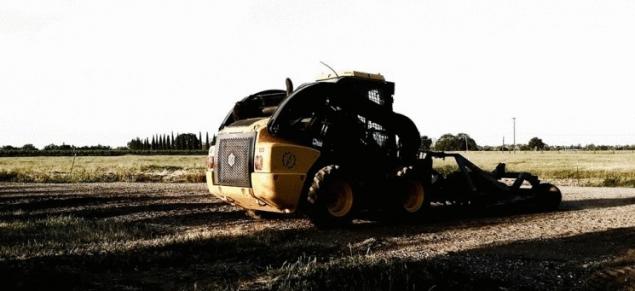
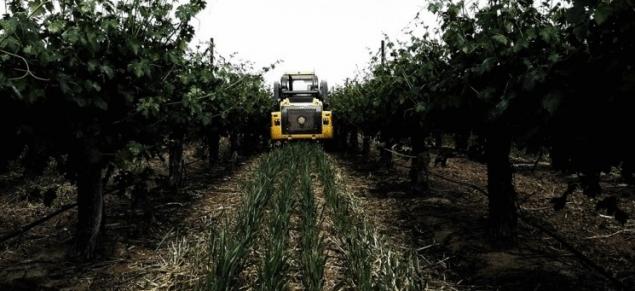

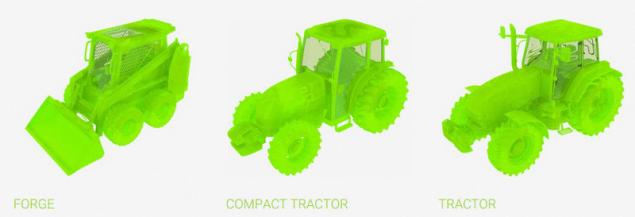
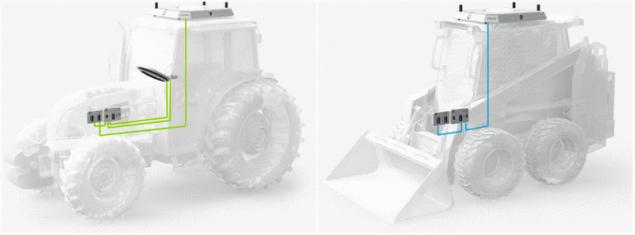
ASI: universal, fully-stocked car
Area of application: vineyards.
Function: pruning and spraying.
Testing: field testing in the States of Kansas and Texas.
Availability: mid-2015.
Price: $75000–$150000 per unit (includes a stocked mini-loader and a set for the driver) depending on the configuration of mini loader
12. COMPANY: WAGENINGEN UR (UNIVERSITY AND RESEARCH CENTRE), WAGENINGEN, THE NETHERLANDS, AGRITRONICS, SINT ANNAPAROCHIE, NETHERLANDS.
Web site: wageningenur.nl and agritronics.nl
Product: research with the goal of developing intelligent systems for a high-quality harvest for commercial partners and research suppliers.
Area of use: sweet peppers in the Netherlands, apples and grapes in Belgium, the hinged spraying in Slovenia and spot spraying in Italy.
Function: harvesting and spraying (spot and attachments).
Testing: testing was conducted on sweet pepper in July in a commercial greenhouse; for apples and grapes have been completed. Field trials on spraying was completed. New combine with the visual quality control and monitoring system for broccoli developed jointly with the startup Agritronics in Sint Annaparochie, the Netherlands.
Availability: the development will take several years.
13. COMPANY: VISION ROBOTICS, SAN DIEGO, CALIFORNIA.
Web site: visionrobotics.com
Product: lettuce thinner Vision Robotics 6-Line and a pruner for grapevines.
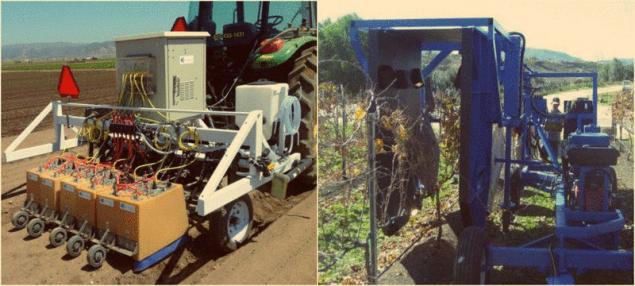
Scope: CA.
Function: testing of pruning the vine; the thinner the salad are already on sale.
Testing: the testing and development of pruning shears for grape vines can be completed in less than 18 months, depending on funding.
Availability: lettuce thinner on sale now; pruner will be available in early 2016.
Price: thinner salad – $140,000 or above (depending on configuration); pruner will likely be sold at the same price.
14. COMPANY: PRECISION HAWK, RALEIGH, NORTH CAROLINA.
Web site: precisionhawk.com
Product: Lancaster UAV with various options of connected sensors and Datamapper.
Application area: Ontario, Canada.
Function: provide data to researchers, agronomists, consultants, farmers and ranchers to make management decisions on farms.
Testing: conduct field tests under the specific consumption of liquid fuel by transport Canada for several years. The bulk of research and development is conducted in Ontario, Canada. Over the last six months received a number of state licenses from the Federal air transport Agency to conduct field testing and research in the United States in conjunction with such institutions as the University of North Carolina, Texas a&M University, Kansas state University and Cornell University.
Availability: 70% sold in different countries. Participated in several projects with American companies for specific research projects.
Price: the base platform Lancaster $15000 plus sensors and other advanced options.
15. COMPANY: F POULSEN ENGINEERING APS, HVALSO, DENMARK.
Web site: visionweeding.com
Product: ROBOVATOR thermal and/or hydraulic cultivator.

Scope: 30 cultivators are already operating in the United Kingdom, the European Union and Canada.
Function: weeding and thinning of lettuce, cabbage, dill and onion.
Testing: California (before distribution North America).
Availability: on sale in 2011, after 8 years of testing and development.
Price: 5-row configuration sold in Europe at a price of 80,000 euros ($100000).
16. COMPANY: KINZE MANUFACTURING, WILLIAMSBURG, IOWA AND JAYBRIDGE ROBOTICS, CAMBRIDGE, MASSACHUSETTS.
Web site: kinze.com and jaybridge.com
Product: an automated system for harvesting row crops — Autonomous tractor and ternovska.

Application: harvesting corn and soybeans, Iowa and Illinois.
Function: independently bulk grain from the combines in the capacity of the truck and delivers it on the field.
Testing: testing Autonomous harvesting held in 2012; in 2013 three farmers in Iowa and Illinois leased the system and used it independently, without oversight by Kinze. The Kinze system has a set of standard components, including GPS, radar, laser sensors and video cameras, software, and thereby determines the obstacles. Developed in collaboration with Jaybridge Robotics.
Availability: Kinze is currently not sells the system of harvesting, but soon promises to release the processor.
Price: not yet established for the system, which includes a module drone control, navigation system, route planning, communication with processor and control software.
17. COMPANY: AGROBOTICS, LITTLE ROCK, ARKANSAS.
Web site: agrobotics.com
Product: AutoProbe system for taking soil samples.
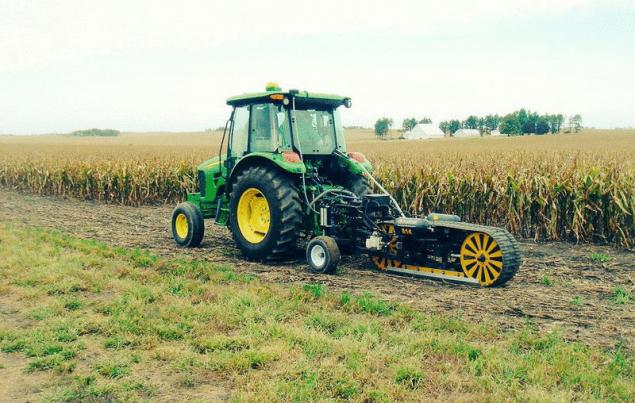
Scope: corn belt in the Midwestern United States.
Function: AutoProbe is a towed unit, which is attached to the tractor at the rear to provide consistent, accurate and continuous soil sampling. The performance of the device – more than 2,500 samples per hour.
Testing: over 7 years in the Mississippi Delta.
Availability: available now as a service for the collection of soil samples for sale; conducted live demonstrations at various agricultural fairs in the United States.
18. COMPANY: AMAZONE-WERKE GMBH, HASBERGEN, GERMANY.
Web site: info.amazone.de
Product: Amazone-Bosch BoniRob — lightweight field robot
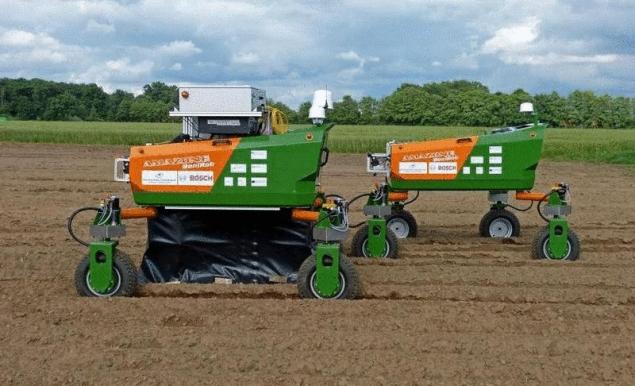
Scope: the work on the experimental plots of maize and wheat in Germany.
Function: Autonomous field robots that could move in any direction designed to work in "teams".
Testing: a versatile lightweight robot for weeding, fertilizer, control and was developed by company Robert Bosch GmbH.
Availability: only 2 finished; it was not announced plans for the sale.
19. COMPANY: HELPER ROBOTECH, GIMHAE, REPUBLIC OF KOREA.
Web site: helpersys.co.kr
Product: BoniRob field robot for grafting fruit and vegetables
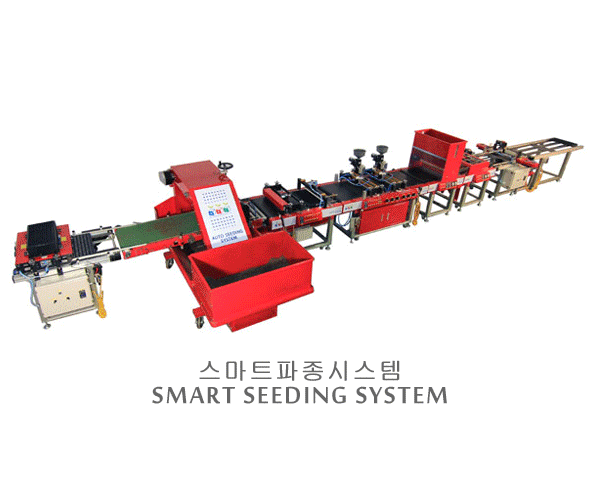
Scope: Korea, Japan and China.
Function: grafting is most common in European and Asian countries as well as in greenhouses worldwide where crop rotation is no longer applied and all vacant land is intensively used. Robotic grafting is a relatively new method, although different mechanisms for grafting was used previously.
20. COMPANY: AGCO FENDT, DULUTH, GA.
Web site: www.agcocorp.com
Product: GuideConnect, section-control and VarioGuide.

AGCO Fendt GuideConnect — dual system

Automatic control system AGCO Fendt VarioGuide
Scope: universal.
Function: section-control integrates various data and enables fully automatic control via GNSS for ISOBUS-capable sprayers, dusters and seeders; the VarioGuide automatic control system for any time of the day; newGuideConnect – development, making possible the joint use of two tractors, one of which is unmanned.
Testing: GuideConnect is still under development, the date of receipt the sale is still unknown; the machine is not equipped with its own system of detection of obstacles is possible, because the product is still being developed.
Availability: all configurations, except for GuideConnect available in EU and the USA.
21. COMPANY: ROWBOT, MINNEAPOLIS, MN.
Web site: rowbot.com
Product: Rowbot is an unmanned multipurpose platform and able to move between the rows of corn. Used for: application of n fertilizer in accordance with the requirements of the maize plant. It can also collect data from sensors for the current and future work. GPS and several sensors allow the robot not to harm the plants.
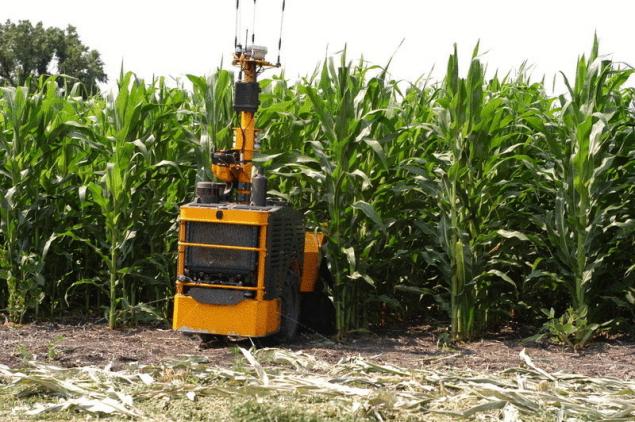
Rowbot in a corn field. Rowbots work in teams to nitrogen fertilizer in accordance with crop needs.
Applications: the corn belt of the United States.
Function: Rowbot travels between corn rows in the fields or under the leaves, is able to distribute nitrogen fertilizer or sowing the seeds of cereals.
Testing: the company works in conjunction with Carnegie Robotics on development of the Rowbot.
Availability: the test marketing was launched this year during the seasonal nitrogen fertilizer and sowing; it is planned to expand the range of services in 2015.
22. COMPANY: SENSEFLY, CHEZEAUX.-SUR-LAUSANNE, SWITZERLAND.
Web site: www.sensefly.com
Product: eBee Ag.
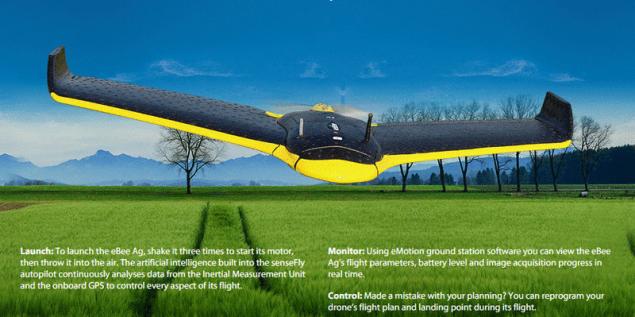
eBee Ag from senseFly company

eBee Ag from senseFly company, the automatic control system and container for transportation
Scope: universal.
Function: the eBee Ag system includes eMotion software and a packing case. Software and camera support a resolution of 2 cm per pixel. Together, these two components are able to create highly accurate 3D maps and records to play 45 minutes of flight.
Testing: no data.
Availability: the EBee ag is now available.
Price: approximately $12,000 for the entire system.
23. COMPANY: CONIC SYSTEMS, BARCELONA, SPAIN.
Web site: conic-system.com
Product: robot for grafting EMP-300.
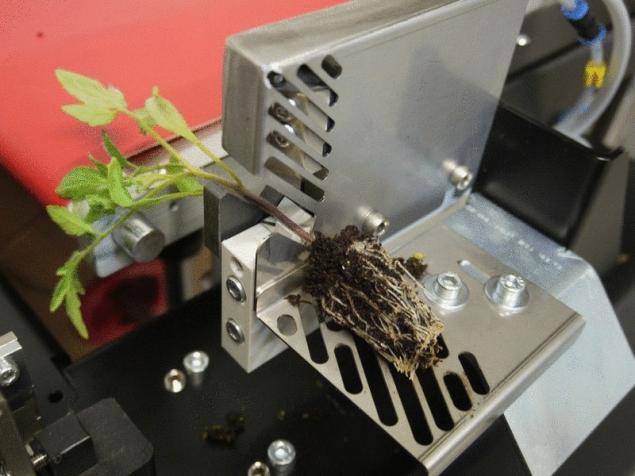
Robot for grafting EMP-300 from Conic Systems
Scope: universal.
Function: it is possible to grafting a variety of vegetables and other greenhouse plants.
Testing: no data.
Availability: in stock.
24. COMPANY: NAIO TECHNOLOGIES, TOULOUSE, FRANCE.
Web site: http://naio-technologies.com/
Product: field robot Naio Technologies Oz.
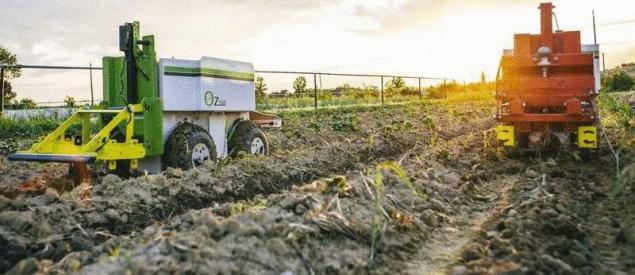
Field robot Naio Technologies Oz
Application field: mainly in France.
Testing: a testing robot of the new generation Naio Technologies Oz (with navigation system) is carried out in real conditions in France.
Function: Naio Technologies Oz – Autonomous elektrotraktor, which can be used for collecting and transporting the crop. Oz functions as a self-propelled robotic tool.
Availability: sales started in 2013.
Price: at the stage of market entry robots are rented to familiarize consumers with a new line of products and to correct discovered in the process of using bugs. The rental price depends on the configuration and ranges from $315 to $475 per month.
25. COMPANY: ROBOTIC HARVESTING, SIMI VALLEY, CA.
Product: machine for harvesting berries, gather information and mobile platform.
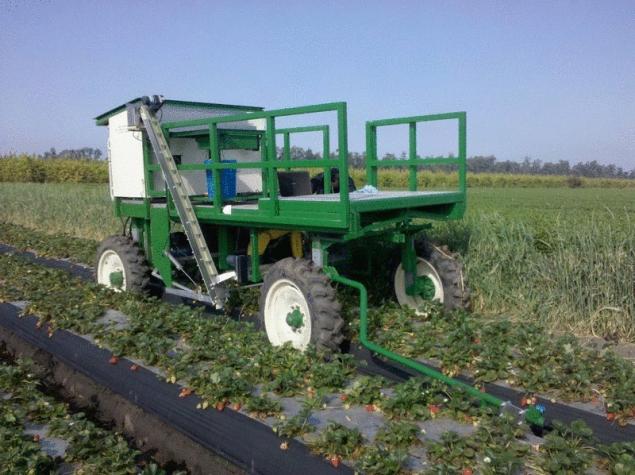
Machine for harvesting berries
Scope: CA.
Testing: currently ongoing in California.
Function: Autonomous mobile device is 3D-map the location of fruit and vegetable, and then the robotic arm gently picks discovered the fruit and places it on the conveyor belt. published
P. S. And remember, only by changing their consumption — together we change the world! ©
Source: www.robo-hunter.com/news/25-kompanii-proizvodyashih-robototehniku-dlya-selskogo-hozyaistva
Gymnastics energy — not getting any younger by the day but by the hour
Remove the stomach professionally
